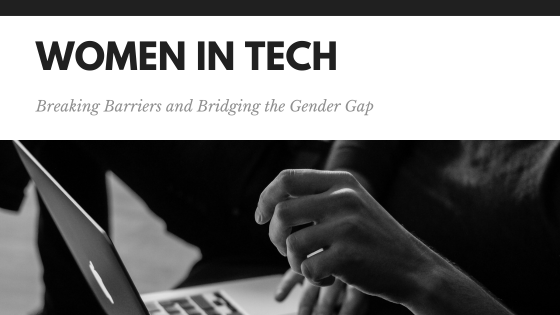28 February 2024

“Girls are capable of doing everything men are capable of doing. Sometimes they have more imagination than men.” – Katherine Johnson, NASA Mathematician
The tech industry has long been known for its rapid innovation, shaping the way we live, work, and communicate. However, one aspect of the industry that has been slower to evolve is gender diversity. While women have made significant contributions to technology throughout history, they remain underrepresented in many tech roles. In this thought piece, we’ll explore the challenges women face in the tech industry, celebrate the successes of female tech pioneers, and highlight initiatives aimed at bridging the gender gap.
Despite the progress made in recent years, a significant gender gap persists in the tech industry. Women are underrepresented in technical roles, leadership positions, and boardrooms for various reasons, such as:
- Bias and Discrimination: Women often face bias in hiring, promotion, and compensation. Stereotypes about women’s technical abilities can hinder their career advancement.
- Lack of Role Models: The absence of female role models in tech can make it challenging for women to envision themselves succeeding in the industry.
- Work-Life Balance: Balancing the demands of a tech career with family life can be particularly challenging for women, impacting their career choices and advancement.
- Male-Dominated Culture: The tech industry has historically been male-dominated, which can create an unwelcoming environment for women.

Despite these challenges, many women have shattered glass ceilings, as also noted in this article by Women in Tech, and left an indelible mark on the tech world. Some notable success stories include:
- Ada Lovelace: Often considered the world’s first computer programmer, Ada Lovelace’s work laid the foundation for modern computing.
- Grace Hopper: A pioneer in computer programming languages, Hopper’s contributions include the development of the COBOL programming language.
- Sheryl Sandberg: As the Chief Operating Officer of Facebook, Sandberg is a prominent advocate for women in leadership roles.
- Susan Wojcicki: CEO of YouTube, Wojcicki played a vital role in Google’s early growth.
- Safra Catz: As CEO of Oracle, Catz is one of the highest-ranking women in the tech industry.
Efforts to address gender diversity in tech are gaining momentum, as noted by Founder, Jenna Bayuk, during an interview with We Are TechWomen, as there has been a rise in fractional hiring within the tech industry for various roles. Several initiatives and strategies are helping to empower women in the industry:
- Mentorship Programs: Mentorship programs connect aspiring female tech professionals with experienced mentors who can provide guidance and support. For example, Girls in Tech, as noted in this article, “6 simple things you can do to support women in tech in 2023”.
- Educational Initiatives: Programs aimed at encouraging girls to pursue STEM fields from an early age help create a pipeline of future female tech leaders. For example, in 2015, model Karlie Kloss formed a partnership with New York’s Flatiron School Pre-College Academy to encourage young women to apply for a “Kode with Karlie” scholarship, a two-week programme introducing software engineering and web app creation. Since 2016, Kode With Klossy summer coding camps was launched and has awarded several scholarships across 3 camps in LA, NYC and St. Louis, with more work continuing to be done.
- Diversity and Inclusion Initiatives: Many tech companies are adopting policies and practices that promote diversity and inclusion in the workplace.
- Networking Groups: Women in tech are forming networks and support groups to share experiences and foster a sense of community.
- Gender-Blind Hiring: Some companies are implementing gender-blind hiring processes to reduce bias in. The reason for this type of action, as noted in Women in Tech is,”U.S. Census data demonstrates that female workers have made enormous strides in the STEM workforce, growing from an 8% minority in 1970 to 28% of all STEM employees by 2019. Despite the progress made in 2020, there is still a considerable gender gap in the GAFAM (Google, Apple, Facebook, Amazon, and Microsoft) workforce with women making up between 29% and 45%. On average only 31% of the GAFAM employees are female.”
Women have been integral to the development of technology from its earliest days, and their contributions continue to shape the industry today. While challenges remain, the tech world is becoming increasingly aware of the importance of gender diversity. As we celebrate the successes of women in tech and support initiatives to bridge the gender gap, we move closer to a future where the industry thrives on diverse perspectives and talents, making technology more innovative and inclusive for everyone. The fight is not over, and these are just some ways to continue to support, re-affirm and encourage that women belong in the tech industry.


